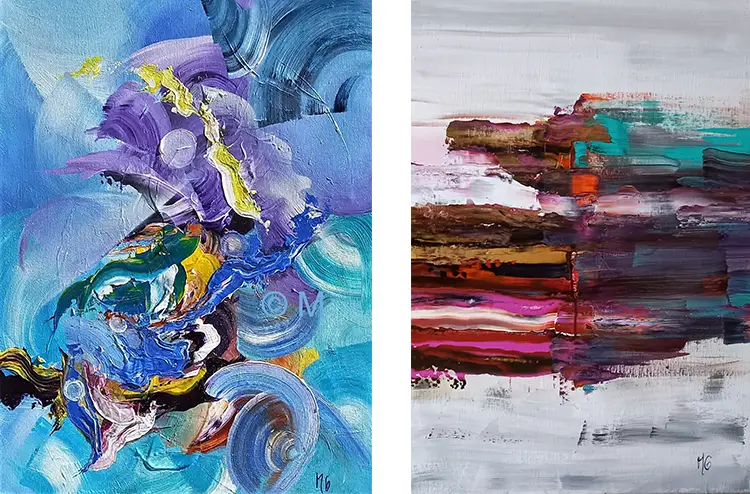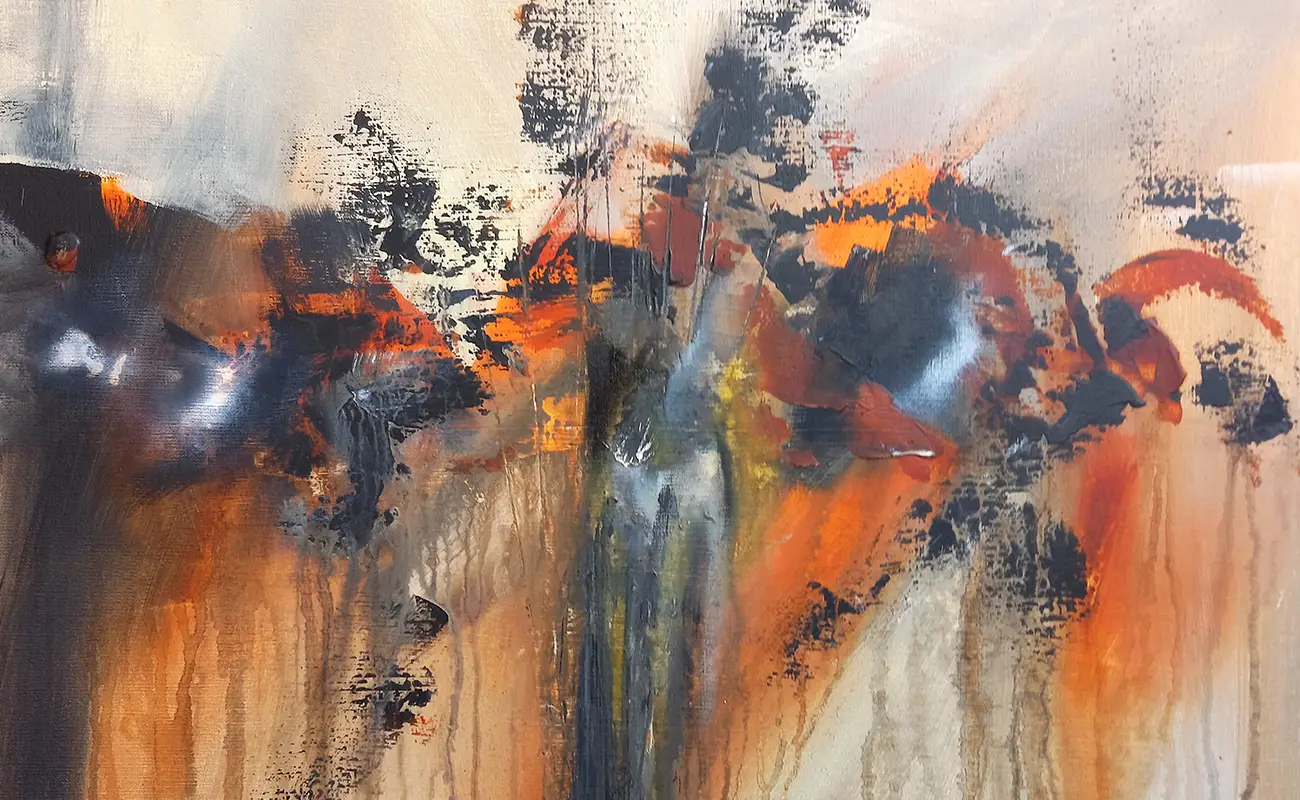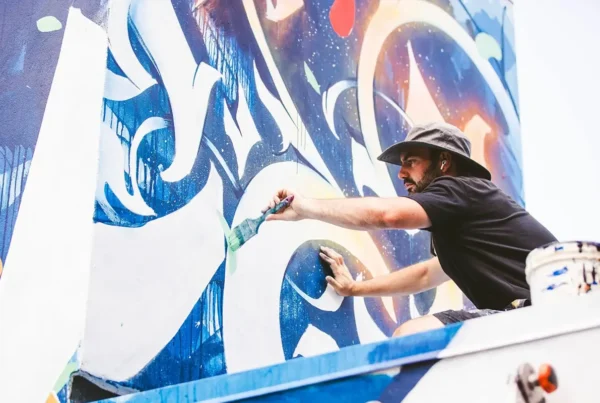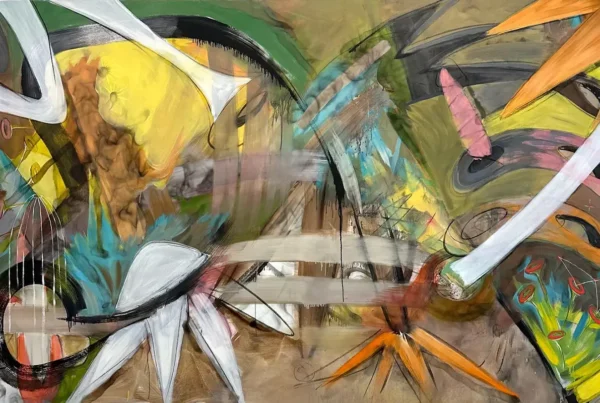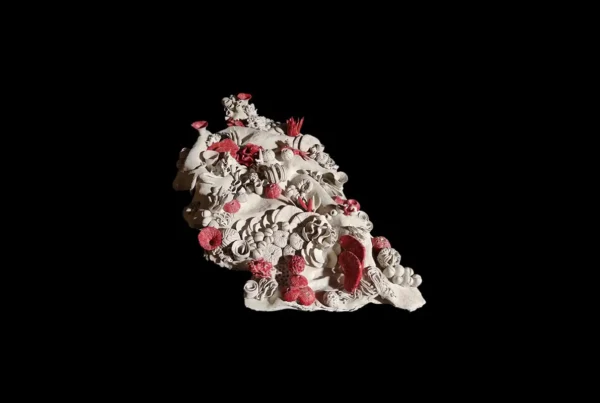“Abstract painting isn’t merely about freeing forms and colors but represents a subtle alchemy between freedom and constraint.”
Art at the Threshold of Spirit and Gesture
Michèle Guillot stands as a distinctive voice in contemporary French painting, shaping a visual language that combines lyrical and poetic abstraction, minimalist aesthetics. Her work is not reduced to formal experimentation; it becomes a site of emotional resonance and spiritual quest. Guillot explores the nuances of color, form, and space, creating artworks that evoke both the intimate pulse of the soul and the expansive rhythms of nature. Driven by intuition and reflective solitude, her art serves as a gateway to interior landscapes and an imaginary dynamic.
Her artistic journey began in adolescence, sparked by a deep, inexpressible desire to create. Initially translating this urge through figurative drawing and writing, she gradually found her way into abstraction. Although she studied drawing at the Grenoble School of Fine Arts and took online courses, her trajectory is largely self-guided. This autonomy fostered a personal and fluid approach, where formal technique and expressive freedom continually interact. Guillot’s fascination with mythology, esoteric studies, philosophy, and symbolic systems further enriches her practice, allowing her paintings to function as both visual compositions and meditative supports.
What sets her work apart is the tension she orchestrates between spontaneity and structure. Her process embodies an intricate dance between instinctive gestures and disciplined composition. To Guillot, abstract painting becomes a dialectic between liberation and constraint. Pigment, form, and brushstroke coalesce in spaces that resist literal meaning, offering instead moments of sensory clarity and emotional suggestion. This duality—freedom versus constraint—emerges as a central axis in her evolving body of work.
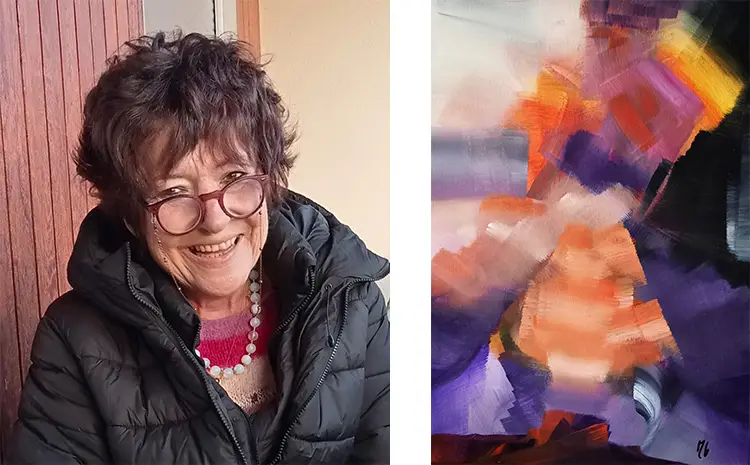
Michèle Guillot: From Classic Beginnings to Creative Impulse
The choice to paint came not from a formal decision, but as a revelation—a visceral impulse that emerged twenty years ago, growing steadily into a profound mode of self-expression. Guillot’s creative process was initially a solitary exploration, deeply personal. It wasn’t until she stepped into the studios of practicing contemporary artists that her passion truly crystallized.
The sight of color-laden jars, raw canvases, and the presence of artistic energy ignited something dormant within her. That moment proved pivotal, transforming latent desire into a powerful momentum.
What followed was a period of prolific creation. Guillot found herself producing dozens of works in a sustained rhythm, with no signs of slowing down. Her engagement with art became more than a passion—it became a necessity, a movement between internal emotion and external form.
This sustained productivity was not driven by deadlines or exhibitions but by an inner call to manifest the invisible, to give shape to transient states of being. The act of painting, for Guillot, carries spiritual and emotional weight, functioning as both reflection and release.
Her artistic influences reveal the layers within her practice. Figures like Chagall, Kandinsky, Klimt, Redon, and Moreau—painters who also explored symbolism, mysticism, and emotional abstraction—echo through her compositions. She also draws strength from modern colorists and surrealists such as Dalí. This lineage of inspiration contributes to her uniquely hybrid style, where lyricism and restraint, chaos and serenity, exist in careful dialogue. These visual references are not imitated, but internalized, shaping her own voice within the broader conversation of abstract art.
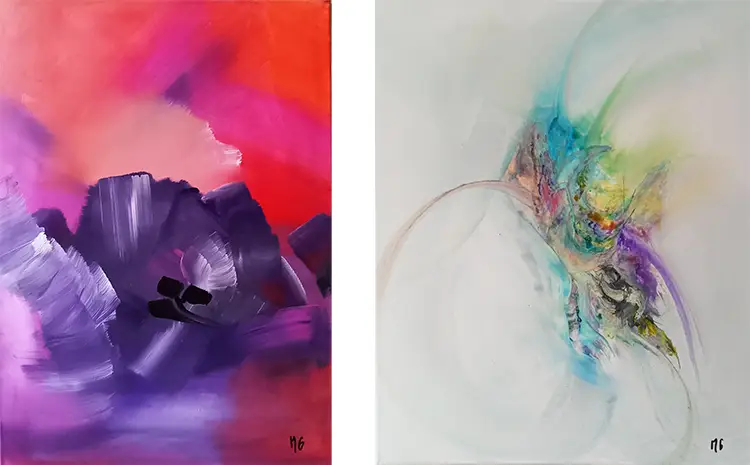
Michèle Guillot: Emotions in Color, Silence in Form
Guillot’s work is deeply rooted in an intuitive understanding of color and its emotional possibilities. Violet, orange, and blue frequently emerge in her compositions, not just as aesthetic choices, but as carriers of mood, sensation, and symbolic charge. Her status as a colorist is inseparable from her poetic vision—each hue selected not only for its visual impact but also for its ability to mirror the soul’s movement. Nature often inspires her, resulting in semi-figurative abstractions that hint at organic shapes, shifting skies, and fluid landscapes.
The themes she explores are both personal and universal: transcendence, lightness, mystery, and journeys. In many of her paintings, upward motion dominates—arabesques, vertical lines, and ethereal curves suggest flight, elevation, or spiritual rising. Works like Souffle and Vieille Âme illustrate the contrast between density and lightness, grounding and escape. The push and pull between gravity and levity becomes a metaphor for human experience—how we balance weight and wonder, body and spirit. This nuanced balance reveals a unique emotional intelligence embedded within her aesthetic.
Her integration of literature into visual practice is particularly notable. The painting Élévation, inspired by Charles Baudelaire’s poem of the same name, holds personal significance. Created with palette knives and a broad brush, the piece begins in turbulence and gradually ascends into calm, sky-like blues. This visual ascent echoes the poem’s metaphysical longing and speaks directly to Guillot’s core artistic philosophy: art as ascension, as transformation through gesture. Other works, such as her Haïkus series, reflect brevity and subtlety, capturing fleeting emotional states with a near-silent intensity. Guillot’s paintings do not shout—they invite, linger, and resonate in quiet but lasting ways.

Michèle Guillot: Her Secret Workshop and Rituals of Creation
Her creative “sanctuary” is a small, home-based workshop designed to nourish focus and emotional presence. Morning is her preferred time to work—an hour when the world still murmurs in quiet tones, allowing her inner rhythms to surface unimpeded. Sometimes accompanied by atmospheric music (like Vangelis), her process unfolds like a ritual: deliberate, sensitive, and into solitude. This space, though modest in size, is expansive in function. It is where intuition meets material, where insights are granted shape through pigment and movement.
Guillot’s approach to media is as exploratory as her thematic work. Acrylics were her first love, drawn to their fluid nature and water-based transparency. She enjoys combining different techniques—using palette knives, spatulas, pouring methods, and Chinese ink drips—to create texture and atmosphere. The fast-drying quality of acrylics allows immediacy, which she balances with the slower, richer possibilities of oil. Her return to oil painting in 2024 marked a significant shift, enabling longer engagement with each piece. Techniques like glazing, impasto, and even finger painting further enhance her tactile connection to the canvas.
Among her aspirations is the desire for a solo exhibition—a space entirely devoted to her way and vision. While her work has already been exhibited nationally and internationally, and has garnered awards and critical attention, Guillot wishes and hopes for a more intimate engagement with viewers. She hopes her paintings will not only be displayed but also chosen to inhabit personal and public spaces, offering aesthetic and emotional resonance to those who live with them. In a world often rushed and distracted, her work seeks to offer calm, an invitation to dream and meditate, and an imaginary dialogue between viewer and artist.
